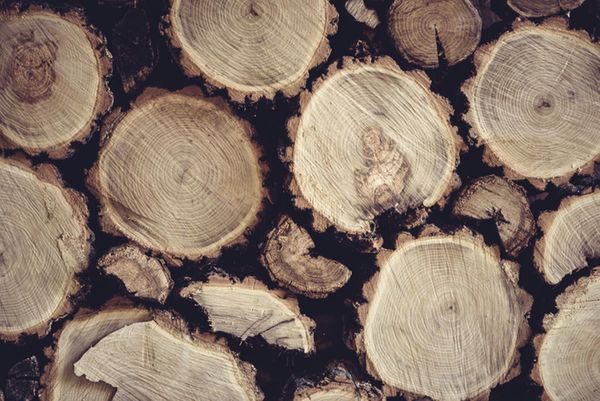
Fluff pulp, also known as fluffy pulp and fluffing, is a common chemical pulp that is made from the long fibers of softwood trees such as pines and other conifer trees. Fluff pulp is known for being low cost, available in bulk, and most importantly, having significant water absorbency capabilities. It was first used to make disposable sanitary napkins, but soon found applications in disposable diapers. Apart from absorbing liquid, fluff pulp further gives the diapers better shape and dry and wet strength.
Applications of fluff pulp other than feminine hygiene and incontinence products include food-grade absorbent pads and various air-laid products, which contain fibrous webs thicker than paper and also more absorbent, such as cooking paper, wet wipes, and wet wipes. The tear resistance and overall tensile strength of fluff pulp containing air-laid products make them suitable for absorbency purposes in industrial fields as well as for consumers. Fluff pulp on its own has good core strength and can also be combined with additional polymers to enable it to retain and distribute liquids.
Market Report For Your Business In Fluff Market
Based on the current global fluff pulp market share, the demand for fluff pulp from the APAC region is expected to grow at a CAGR (compound annual growth rate) of 5-6 percent till 2020, driven by rising demand for personal hygiene products. More women entering the workforce and the existing low penetration rate of products such as diapers are expected to further drive the demand in the APAC region. Other factors driving the growth of the global fluff market are an overall increase in the aging population, female working population, and babies, along with an increase in awareness of absorbency productions and rising disposable income.
- Diapers are the single largest end-user industry for fluff pulp, accounting for 38 percent of the demand, followed by adult incontinence products for 26 percent, tampons for 24 percent and others for 12 percent. Baby diapers continue to be the most significant end-user segment for fluff pulp, based on the volume as well as the value of the baby diapers market. The demand for air-laid products is expected to increase in the coming years, driving the growth of the fluff pulp market.
- The U.S. is one of the largest producers of fluff pulp at a global level, accounting for 83 percent of the global production, as it has a massive availability of raw materials, specifically the trees used in the fluff pulp manufacturing process. North America has high market maturity but low growth rates, with the demand stable. The APAC is the biggest importer of fluff pulp from North America. Raw material, including SBSK wood chips, and chemicals such as chlorine dioxide and calcium oxide, is a major cost component in the production of fluff pulp, accounting for 40-45 percent of the total costs. Top global suppliers for fluff pulp are International Paper, Georgia Pacific, Stora Enso and Domtar.
- Fluff pulp is a popular commodity for production due to several reasons; there is less need for technical knowledge and understanding as the production is straightforward, and requires fewer chemicals. Manufacturers can adapt the production for BSK or BHK or fluff pulp as needed, thereby allowing the manufacturers to diversify their offerings. Steady growth in demand at a global level ensures that there is a market for the fluff pulp manufacturers. In comparison to other forms of pulp, fluff pulp has premium pricing which results in better returns of more than 15 percent of the ROI. The LATAM region is also moving towards self-sufficiency in the fluff pulp market. There is enough capacity to meet the rising demands for fluff pulp since manufacturers often switch to the production of ‘unfluffed’ paper-grade pulp when there is excess SBSK mill capacity. The contract period ranges from 1-3 years, with the longer period of contract facilitating a higher discount in the fluff pulp market.
- Despite the growth projected for the fluff pulp market, there are certain challenges the market is facing, primarily lead by growing environmental concerns among the public, with people in developed countries moving towards more sustainable and eco-friendly options rather than one-use disposable items. Since fluff pulp products, such as diapers and feminine hygiene products are non-biodegradable, they end up in landfills and are difficult to safely dispose of. Cloth diapers with reusable inserts and cloth feminine pads and menstrual cups are gaining popularity as they are safer for the environment and are reusable, thereby reducing costs.
https://blackmenheal.org/wp-content/languages/new/tadalista.html
https://blackmenheal.org/wp-content/languages/new/tegretol.html
https://blackmenheal.org/wp-content/languages/new/tenormin.html
A business in the fluff market has immense opportunities in today’s market atmosphere, with steady demands and straightforward manufacturing processes. There is significant competition in the field, due to which it is important to conduct thorough market research and evolve the offerings with the changing times. Although the demand for fluff pulp may be slightly reducing in developed markets, in developing markets, the preference is for disposable items made of fluff pulp, that are considered easier to use and easier to access, due to which the demand for fluff pulp is not expected to decline anytime soon.

